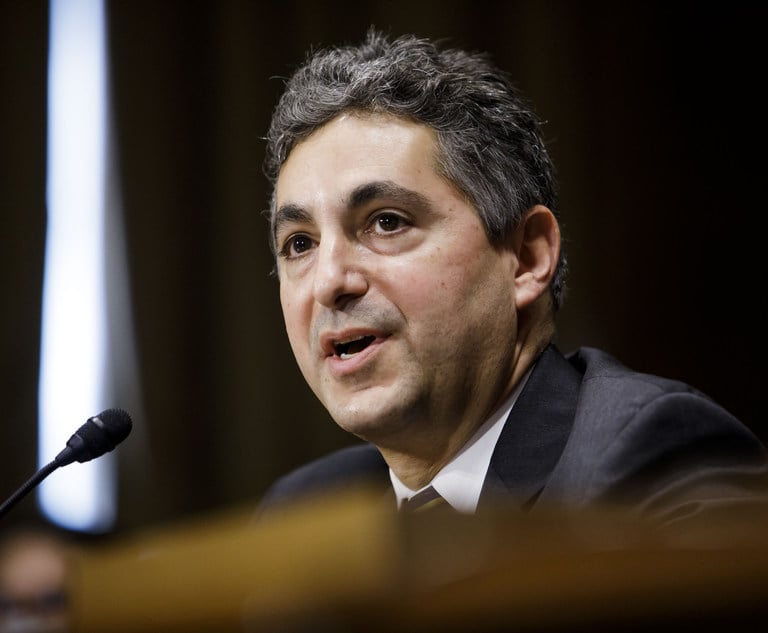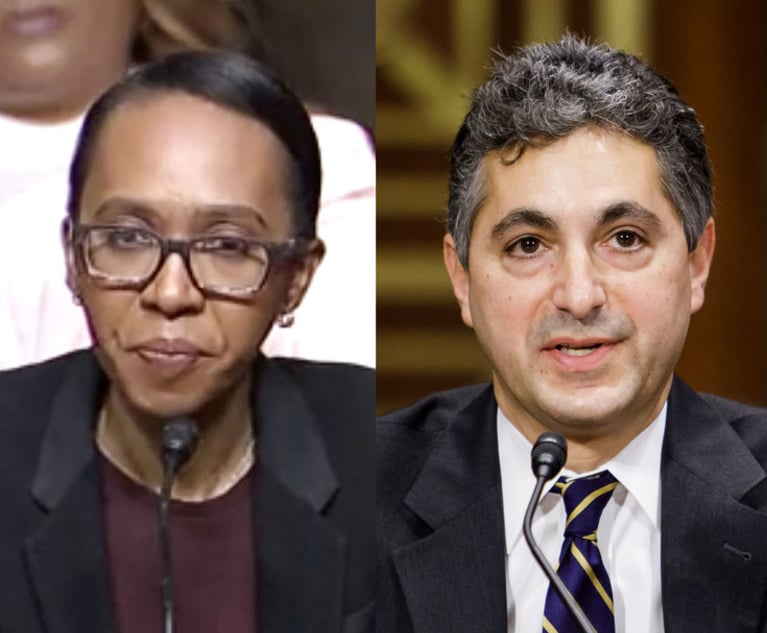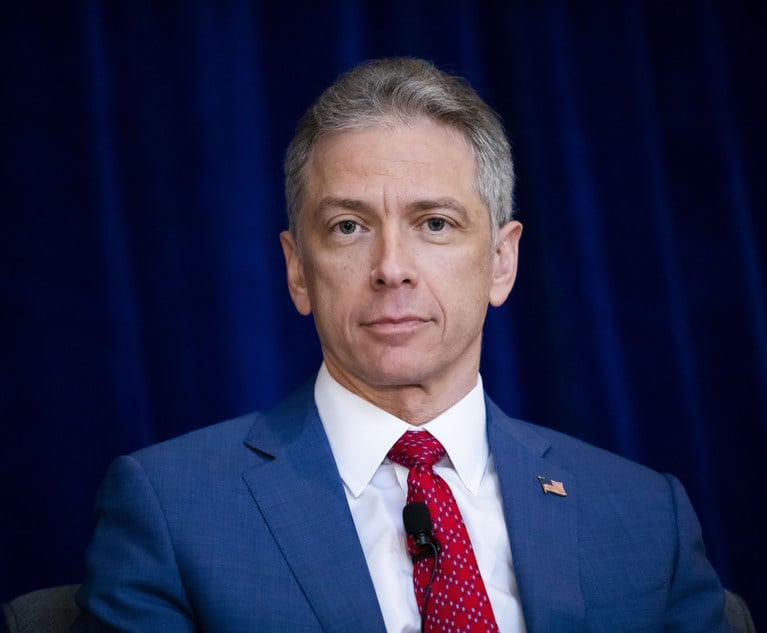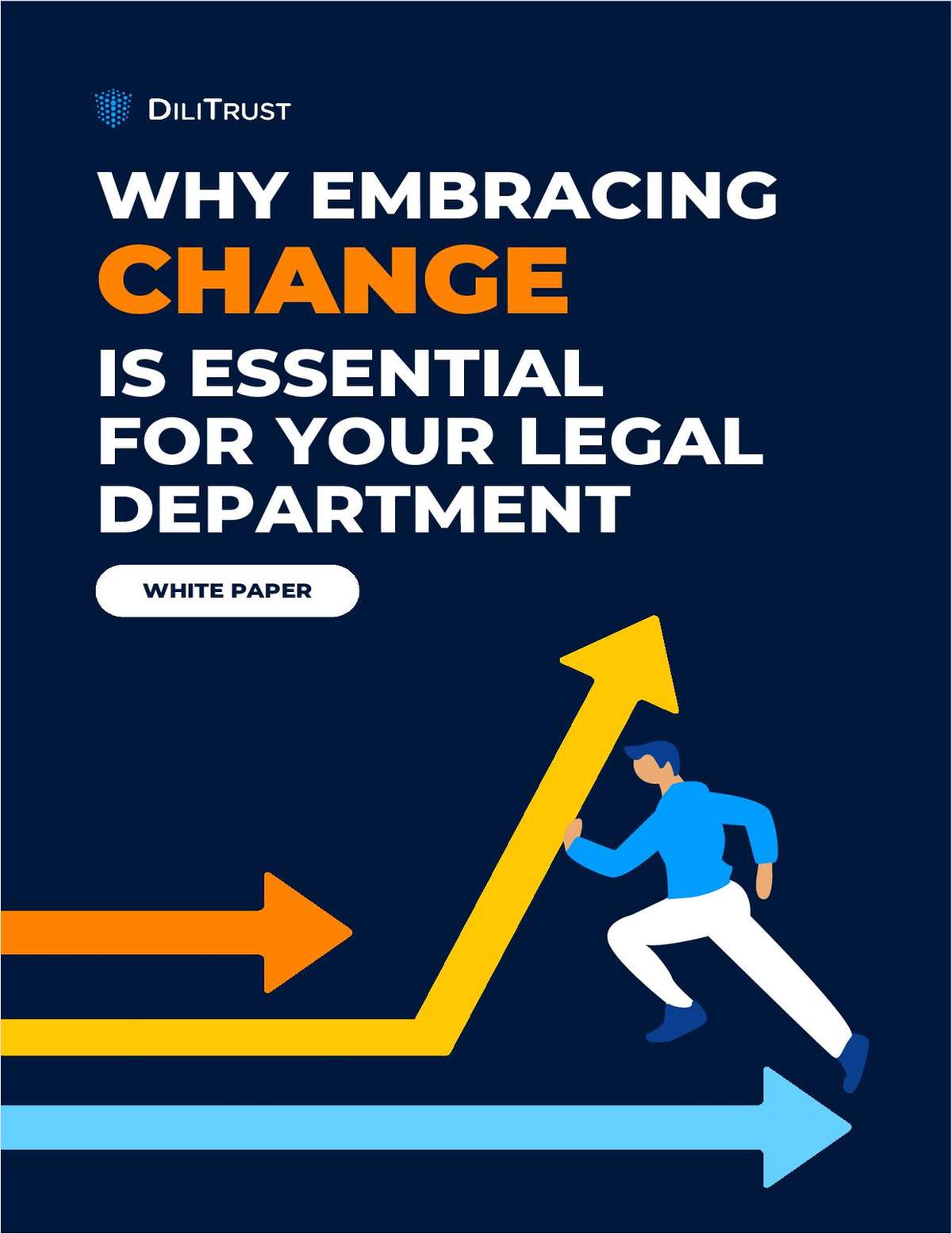Skilled in the Art: Fish Makes 15 Years of Litigation Count + Months of PTAB Decisions Might Be Null and Void
Fish & Richardson's concludes a 15-year journey to a $175 million patent infringement settlement.
October 25, 2019 at 04:39 PM
7 minute read
Welcome to Skilled in the Art. I'm Law.com IP reporter Scott Graham. Here's what I'm looking at today:
• Fish & Richardson's 15-year journey to a $175 million patent infringement settlement.
• Federal Circuit has constitutional concerns about PTAB APJ appointments.
• Pillsbury opens its PTAB Handbook to all.
As always, you can email me your feedback and follow me on Twitter.
 Fish & Richardson partner Frank Scherkenbach.
Fish & Richardson partner Frank Scherkenbach.The Long, Long Road to a $175 Million Settlement
Fifteen years ago, San Jose electronics company Power Integrations sued Fairchild Semiconductor, alleging infringement of technology used in chargers for mobile devices.
Numerous district court trials, PTAB and ITC actions, and Federal Circuit appeals later, PI and Fairchild successor ON Semiconductor finally put down their swords earlier this month. ON will pay PI $175 million to settle all of the litigation, at least for the next several years.
"It's a little like sending your newborn off to college. It's almost been that long," said Fish & Richardson partner Frank Scherkenbach, who has litigated the cases for PI "arm-in-arm" with Fish partners Michael Headley and Howard Pollack from day one.
Across the table has been a long line of some of the world's top law firms: Orrick, Finnegan Henderson, McDermott, MoFo, Paul Hastings, Baker Botts and, most recently on the appeals, Quinn Emanuel Urquhart & Sullivan.
Initially, Power Integrations and Fish made some law they didn't want: The Federal Circuit ruled in 2013 that lost profits for overseas sales weren't recoverable, dropping PI's $34 million jury award in Delaware federal court to about $6 million. Then last year U.S. District Judge Leonard Stark ruled that the Supreme Court had implicitly overruled the Federal Circuit with its WesternGeco decision, and put worldwide damages back on the table.
"It was pending so long, we were right, then we were wrong, then we were right again," Scherkenbach quips.
The Federal Circuit had been scheduled to hear ON's appeal next month, one of several factors Scherkenbach said might have helped spur the settlement.
Another big factor, in his view, were two district court cases pending before U.S. District Judge Maxine Chesney in San Francisco. PI won verdicts of $105 million and $140 million in the first case, only to have the Federal Circuit order retrials each time as it refined the law of damages. Scherkenbach said he was confident the third trial was still going to yield a big number, perhaps $90 million. With liability already affirmed on appeal, "there really was no escape for them," he said. A separate, yet-to-be-tried case before Chesney had the potential for an even bigger award, Scherkenbach said.
It did look for awhile as if ON had one escape route. After announcing its planned acquisition of Fairchild in 2015, but before the deal closed, ON filed petitions for IPRs challenging PI patents, ultimately invalidating quite a few claims, including some that supported the San Francisco jury awards. This time PI came away with the win at the Federal Circuit: The appellate court ruled in June of this year that ON was in privity with Fairchild, and therefore was years too late in bringing the IPRs. "That caused pretty much their entire IPR strategy to crumble," Scherkenbach said.
According to a Power Integrations SEC filing, the settlement calls for each side to release the other from current patent infringement actions, and not to file any additional actions until at least 2023. Neither party granted the other a license, which Scherkenbach acknowledged is unusual in patent settlements.
It reflects that PI lives and dies by innovation, he said. "They don't license their IP—never have, never will—because it's the lifeblood of their company."
After 15 years, he'd certainly be in a position to know.
|
SPONSORED BY ALM
Rod Rosenstein Keynotes Legalweek New York 2020
From Rod Rosenstein to a Live Newsroom, here's a taste of the big and small in what's new at Legaltech and Legalweek New York in February. READ MORE
 Ropes & Gray's Scott McKeown
Ropes & Gray's Scott McKeown
The PTAB Has an Appointments Problem
When the Supreme Court ruled last year that the SEC's administrative law judges were unconstitutionally appointed, a lot of people began making the argument that the same logic should apply to the PTAB's 270 APJs.
I was skeptical (as were others), but what matters now is that the Federal Circuit is taking the argument very, very seriously. As Scott McKeown points out on Ropes & Gray's Patents Post-Grant blog, a three-judge panel signaled strongly during arguments earlier this month that it may have to remove PTAB judges' civil service protections in order to keep the board viable under the Supreme Court's Lucia decision.
As Judge Kimberly Moore put it during argument in Arthrex v. Smith & Nephew, the court might have to cut "a tiny little unconstitutional part" of the PTO personnel statute "to make the rest constitutional." The court ordered further briefing on the issue last week, underscoring its seriousness.
If the court were to rule as it's signaling, it will be another disruption for a board and practitioners that just endured major changes last year following the Supreme Court's SAS Institute v. Iancu. All final written decisions from the PTAB that are now pending appeal would likely get sent back for a re-do before a different panel of PTAB judges, McKeown says.
He doesn't think the new panels would have to reopen the record or hold new hearings. But they would have to take a fresh look at the evidence and render an independent judgment. Anything less, and "you can imagine the hue and cry that they're just rubber-stamping everything."
That would further strain a board that's already in an ongoing race to meet the AIA's statutory deadlines for producing opinions.
So what kind of impact would the loss of civil service protections have on the PTAB, especially if it were being done for the explicit purpose of giving the PTO director more control over board decision making?
"I can't imagine it would be great for retaining people and keeping them happy," McKeown said. "I'm sure if I were a judge, I'd like the independence to do what I think is right" under the law. (Disclosure: McKeown's spouse is a board member.)
I think the Federal Circuit gets that too. But it sounds as if the judges think that removing the protections might be the least disruptive way to keep the PTAB in the Supreme Court's good graces. As Moore put it at the Oct. 1 argument, "If the thing's unconstitutional, they don't actually have those protections anyway, because they were not rightfully appointed."
McKeown and Ropes' Doug Hallward-Driemeier and Matt Rizzolo will be conducting a webinar on the topic Nov. 4. The Federal Circuit is scheduled to hear a second case that day that raises the same issue, which might shed more light on the court's intentions.
|
Pillsbury's PTAB Handbook, Now Near You
Speaking of the PTAB, the Fifth Edition of Pillsbury Winthrop Shaw Pittman's PTAB Handbook is now available—for everyone. Edited by Pillsbury partner Bill Atkins, the Handbook breaks down each step of a PTAB proceeding with examples from all relevant PTAB caselaw.
Previous editions were published by Bloomberg BNA, but Pillsbury has decided to publish the latest version on a dedicated website, free for anyone to peruse. "We've got a team of people looking at every decision that issues," Atkins said. "We're doing our best to keep pace with the PTAB."
That's all from Skilled in the Art this week. I'll see you all again on Tuesday.
This content has been archived. It is available through our partners, LexisNexis® and Bloomberg Law.
To view this content, please continue to their sites.
Not a Lexis Subscriber?
Subscribe Now
Not a Bloomberg Law Subscriber?
Subscribe Now
NOT FOR REPRINT
© 2024 ALM Global, LLC, All Rights Reserved. Request academic re-use from www.copyright.com. All other uses, submit a request to [email protected]. For more information visit Asset & Logo Licensing.
You Might Like
View All
Skilled in the Art With Scott Graham: I'm So Glad We Had This Time Together

Design Patent Appeal Splinters Federal Circuit Panel + Susman Scores $163M Jury Verdict + Finnegan Protects Under Armour's House
Trending Stories
- 1Lawyer’s Resolutions: Focusing on 2025
- 2Houston Judge Exonerated on Appeal, Public Reprimand Vacated
- 3Bar Report - Dec. 30
- 4Employment Law Developments to Expect From the Second Trump Administration
- 5How I Made Law Firm Leadership: 'It’s Imperative That You Never Stop Learning,' Says Ian Ribald of Ballard Spahr
Who Got The Work
Michael G. Bongiorno, Andrew Scott Dulberg and Elizabeth E. Driscoll from Wilmer Cutler Pickering Hale and Dorr have stepped in to represent Symbotic Inc., an A.I.-enabled technology platform that focuses on increasing supply chain efficiency, and other defendants in a pending shareholder derivative lawsuit. The case, filed Oct. 2 in Massachusetts District Court by the Brown Law Firm on behalf of Stephen Austen, accuses certain officers and directors of misleading investors in regard to Symbotic's potential for margin growth by failing to disclose that the company was not equipped to timely deploy its systems or manage expenses through project delays. The case, assigned to U.S. District Judge Nathaniel M. Gorton, is 1:24-cv-12522, Austen v. Cohen et al.
Who Got The Work
Edmund Polubinski and Marie Killmond of Davis Polk & Wardwell have entered appearances for data platform software development company MongoDB and other defendants in a pending shareholder derivative lawsuit. The action, filed Oct. 7 in New York Southern District Court by the Brown Law Firm, accuses the company's directors and/or officers of falsely expressing confidence in the company’s restructuring of its sales incentive plan and downplaying the severity of decreases in its upfront commitments. The case is 1:24-cv-07594, Roy v. Ittycheria et al.
Who Got The Work
Amy O. Bruchs and Kurt F. Ellison of Michael Best & Friedrich have entered appearances for Epic Systems Corp. in a pending employment discrimination lawsuit. The suit was filed Sept. 7 in Wisconsin Western District Court by Levine Eisberner LLC and Siri & Glimstad on behalf of a project manager who claims that he was wrongfully terminated after applying for a religious exemption to the defendant's COVID-19 vaccine mandate. The case, assigned to U.S. Magistrate Judge Anita Marie Boor, is 3:24-cv-00630, Secker, Nathan v. Epic Systems Corporation.
Who Got The Work
David X. Sullivan, Thomas J. Finn and Gregory A. Hall from McCarter & English have entered appearances for Sunrun Installation Services in a pending civil rights lawsuit. The complaint was filed Sept. 4 in Connecticut District Court by attorney Robert M. Berke on behalf of former employee George Edward Steins, who was arrested and charged with employing an unregistered home improvement salesperson. The complaint alleges that had Sunrun informed the Connecticut Department of Consumer Protection that the plaintiff's employment had ended in 2017 and that he no longer held Sunrun's home improvement contractor license, he would not have been hit with charges, which were dismissed in May 2024. The case, assigned to U.S. District Judge Jeffrey A. Meyer, is 3:24-cv-01423, Steins v. Sunrun, Inc. et al.
Who Got The Work
Greenberg Traurig shareholder Joshua L. Raskin has entered an appearance for boohoo.com UK Ltd. in a pending patent infringement lawsuit. The suit, filed Sept. 3 in Texas Eastern District Court by Rozier Hardt McDonough on behalf of Alto Dynamics, asserts five patents related to an online shopping platform. The case, assigned to U.S. District Judge Rodney Gilstrap, is 2:24-cv-00719, Alto Dynamics, LLC v. boohoo.com UK Limited.
Featured Firms
Law Offices of Gary Martin Hays & Associates, P.C.
(470) 294-1674
Law Offices of Mark E. Salomone
(857) 444-6468
Smith & Hassler
(713) 739-1250










